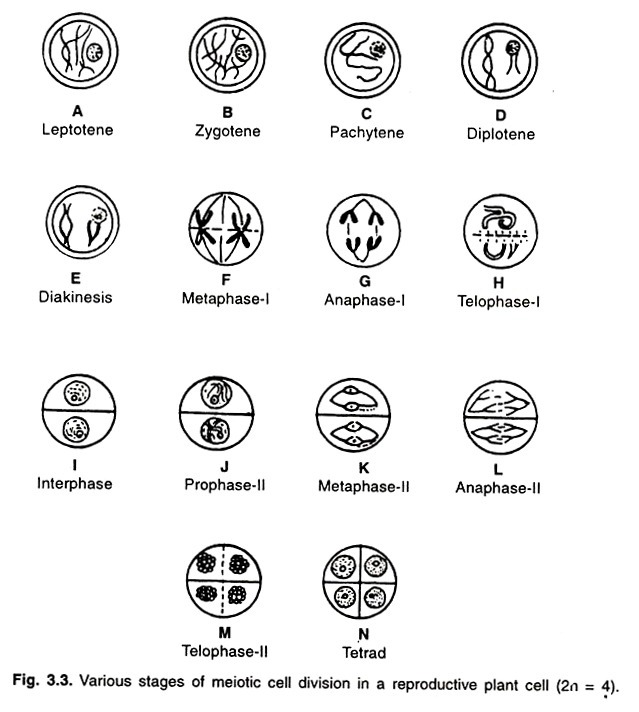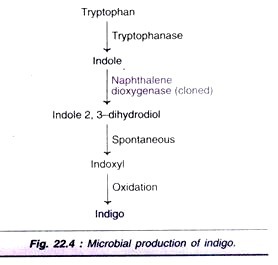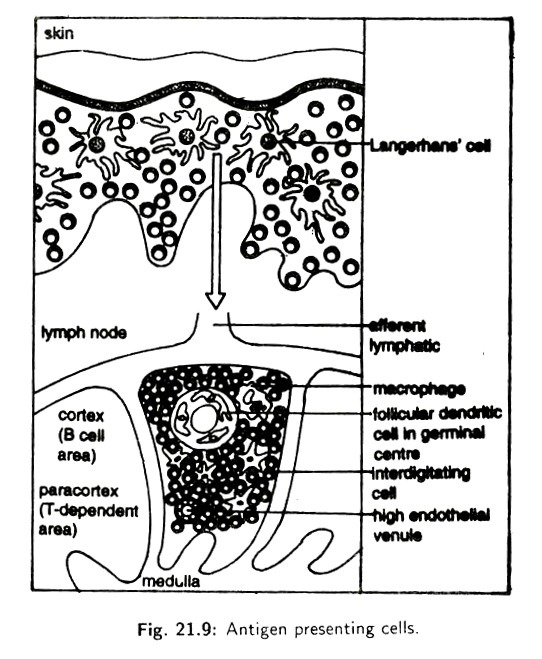Let us make an in-depth study of the genetic code. After reading this article you will learn about: 1. Deciphering or Cracking of Genetic Code 2. Khorana Technique 3. DNA Genetic Codon is Triplet 4. Properties of Genetic Codons and 5. Effects of Mutation on Genetic Code.
Deoxyribonucleic acid DNA is the genetic material of the cell, carrying information in a coded form from cell to cell and from parent to progeny. When a gene is active or expressed, it is first copied (transcribed) into another nucleic acid, RNA, which, in turn, directs the synthesis of the ultimate gene product, the protein (translation).
Central dogma suggests the transfer of information from linear sequence of four letter alphabet of the polynucleotide chain into the twenty amino acid language of the polypeptide chain (protein).
Process of protein synthesis is called translation. Translation of RNA into protein is unidirectional and irreversible. Proteins are polypeptide chains of 20 amino acids. The actual process of protein synthesis involves linking together of amino acids in a specific sequence of polypeptide chain.
The genetic information exists in coded form called genetic code. Deciphering or cracking of genetic code was milestone discovery of biology.
Contents
Deciphering or Cracking of Genetic Code:
The most important feature of the genetic code is that it is a triplet codon. Three consecutive nucleotides of a single strand of DNA contain the information for coding a specific amino acid. It is known as a triplet codon. Translation takes place in such a way that these nucleotide triplets are read in a successive non-overlapping fashion. The information is first transcribed into messenger RNA, which has a sequence of bases complementary to DNA from which it is copied.
DNA has four types of bases C, T, G, A while RNA has four complementary bases G, A, C, U. The four base language of DNA is translated into language of 20 amino acids. Deciphering or cracking of genetic code is the outcome of research of various scientists like Marshal Nirenberg, Steve Ochoa, Hargobind Khorana, Francis Crick, Mattaei and many others.
They discovered that the order in which the nucleotides are arranged – mRNA would determine the sequence of amino acids in polypeptides. Nirenberg and Mattaei gave the first experimental proof for the triplet codon. They used artificial mRNA raide of only uracil nucleotides (Poly U) in a cell free system. It resulted in the synthesis of polypeptide chain made up of only one kind of amino acid, phenylalanine. It was concluded that codon for phenylalanine was uridylic acid basis (uracil), UUU.
Similarly poly C(CCC) codon represented amino acid proline and poly A(AAA) codon represents am: no acid chain of lysine.
Later Hargobind Khorana confirmed the genetic code to be triplet codon. Using synthetic mRNA have alternating polynucleotides in a cell free system, discovered the chain of alternating amino acid using alternating uracil (U) and guanine (G) triplets which showed the following results.
Similarly, alternating ACA and CAC triplets produced a chain of following amino acids.
This also confirmed that each codon is a triplet. The cell free protein-synthesizing system was an extract of E. coli without walls. It contained ribosomes, tRNA, tRNA synthetase enzymes, ATP and radioactive amino acids. Use of artificial trinucleotide templates resulted in determination of base composition of all genetic codons.
Khorana Technique:
H. G. Khorana and associates synthesized DNA of known sequences in vitro conditions. From this DNA, the mRNA is transcribed. These mRNA molecules, which have known sequences of nucleotides are then directed to synthesize polypeptides.
These polypeptides are then sequentially degraded to know their amino acid sequences. The nucleotide sequence is then compared with amino acid sequence. This nucleotide sequence specifies codons of amino acids. This technique led to the determination of codons for all amino acids.
DNA Genetic Codon is Triplet:
If a genetic codon consisted of two consecutive bases, the number of codons would be 42 = 16. Since the number of amino acids is 20, this is insufficient. Therefore, three is the minimum number of bases needed to code for 20 amino acids 43 = 64. George Gamow in 1964 pointed out that the code would contain at least three consecutive bases.
The length of the coding portion of a gene called reading frame depends upon the length of the message to be translated. For example, a sequence of 600 nucleotides will code for a polypeptide having a chain of 200 amino acids. Therefore, the length of mRNA depends upon the length of polypeptide it codes for.
Codons provide key to the translation of genetic information dictating the synthesis of specific proteins. The protein synthesis machinery reads triplet codons sequentially from one triplet codon to the next. Genetic code sequences explain how protein sequence information is stored in nucleic acid and how the information is translated into proteins.
Universal Genetic Code:
Properties of Genetic Codons:
As the genetic codon is read on mRNA, it is described in terms of four kinds of bases A, G, C, U. The sequence of template strand of DNA is read in the direction of 5′ → 3′.
1. Genetic codon is a triplet codon:
The consecutive three nucleotides of the coding strand of DNA code for one amino acid.
2. Redundancy of the code:
Out of 64 codons, 61 codons represent amino acids, the remaining three are stop codons. As there are only 20 amino acid, coded by 61 codons, several codons specify the same amino acids. In this way the codons are synonyms.
This phenomenon is called redundancy of the code or degenerate code. Except for methionine and tryptophan all other codons are multiple codons. Each of the three amino acids — leucine, serine and arginine is represented by six different codons.
Number of codons coding for different amino acids:
Wobble Hypothesis:
This was put forward by Francis Crick in 1965. According to this, hydrogen bonding between the codon of mRNA and anticodon of tRNA, there is a strict base pairing rule only for first two bases of the codon, while the base pairing involving the third base of codon appears to be less important. This is known as wobble hypothesis.
The first two bases of each codon are primary determinants of specificity. The third base pairing is not very stable and wobbles. For example, CUU, CUG, CUC, CUA codons, which differ only at the third base represent the same amino acid leucine. The first two bases of the codon form strong base pairs with the corresponding bases of the anticodon but the third base forms weak hydrogen bond.
At third position even unusual base pairing which does not conform to Watson and Crick base pairing rule can occur. Like adenine, cytosine and Uralic from A-I. C-I and U-I base pairs respectively at the third position, where I is inosine base.
Several codons meant for the same amino acids are recognized by the same tRNA. In this way a minimum of 32 tRNAs are required to translate 61 codons.
3. The codons are non-overlapping:
The same base cannot be a part of the two consecutive codons. They lie adjacent to each other.
4. The codons are comma less:
The three bases on DNA code for one amino acid and next three bases will code for next amino acid and so on. There is no gap or pause between the consecutive triplets.
5. Start codons:
The codons which initiate protein synthesis is called the start codon. The first amino acid of the polypeptide chain is always methionine coded by AUG codon. Therefore AUG is the start codon. Rarely the first amino acid is valine coded by GUG. In prokaryotes AUG codon codes for a modified amino acid, formyl methionine (f-Met).
6. Stop codons:
Protein synthesis stops before UAA codon, UAG codon and UGA codon. This indicates that these three codons are stop codons. They terminate the protein synthesis. The completed polypeptide chain is released. Release factors (RF) enter the ‘A’ site of the ribosome and trigger hydrolysis of the peptidyl-tRNA occupying the ‘P’ site resulting in the release of newly synthesized protein.
Stop codons are also called non-sense codons. No tRNA can bind to these codons. UAG is called amber codon, UAA is called ochre codon and UGA is called opal codon.
7. Genetic code is universal:
A particular codon codes for the same amino acid in all organisms from prokaryotes to plants and animals including viruses.
The universality of genetic code provides strong evidence that life on the earth started from a common ancestor. When living forms appeared on the earth, the genetic code was established. It has not changed since then, throughout the evolution of living forms and has been preserved throughout the biological evolution.
8. Co-linearity:
The sequence of codons on mRNA and the sequence of corresponding amino acids in polypeptide chain are co-linear.
9. Translation of mRNA occurs in 5′ → 3′ direction.
Codons on mRNA and anticodons n tRNA are written as follows:
First base of the codon pairs with the third base of the anticodon. Codons are written in 5′ 3′ but anticodon sequence is written with a backward arrow.
Effects of Mutation on Genetic Code:
A mutation causes changes in DNA sequence and this change is reflected in the sequence of RNA and then corresponding protein.
The main two types of mutation are:
1. Point Mutations:
These involve a single nucleotide.
2. Mutations Involving Longer Segments of Gene:
These include deletions of whole genes, translocations, transposable elements etc.
There are following four types of point mutation:
1. Silent Mutations:
Here, there is change of nucleotides but not of amino acids, because they affect the third base of the codon which is usually less important in coding. For example if CCA is changed to CCU, the amino acid coded will still remain the same i.e., proline.
2. Mis-sense Mutations:
These mutations change the meaning of codon, substituting one amino acid by another amino acid. For example, in human genetic disease sickle cell anemia, glutamic acid in the p-globin subunit of hemoglobin is replaced by valine. This changes the shape of the RBC.
3. Non-sense Mutations:
These arise when a codon for a codon is mutated into the termination codon which are UAG, UAA or UGA resulting in the termination of the polypeptide chain. This leads to the production of shorter (truncated) protein. For example, if U is replaced by G at position number 12th it will give
4. Frame-shift Mutation:
These arise from the insertions or deletions of individual nucleotides and cause the rest of the message downstream the mutation to be read differently, producing an incorrect protein from that point onwards.
5. Transition:
It involves substitution of one purine by another purine and substitution of one pyrmidine by another pyrimidine, for example, cytosine changes to uracil by oxidative deamination.
6. Transvertion:
In this case pyrimidine is replaced by a purine or a purine is replaced by a pyrimidine. Here A-T pair becomes T-A or C-G pair.







